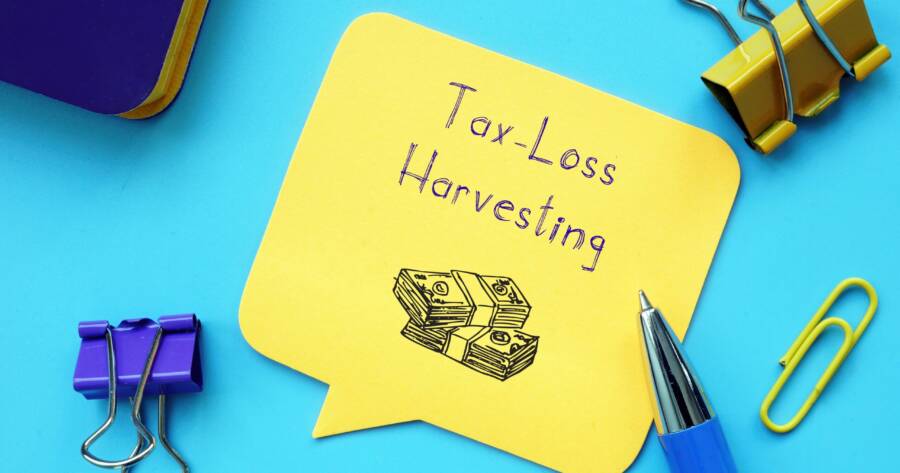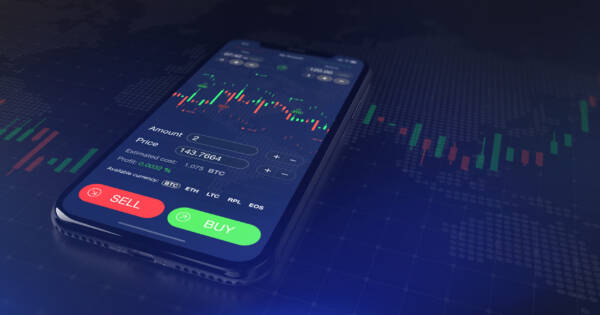Tax loss harvesting is a strategy many investors use to legally reduce how much they owe on investment gains. By selling losing investments and replacing them with similar alternatives, it’s possible to lock in a loss now while keeping your overall portfolio on track. The approach can be powerful, but it also comes with strict IRS rules and potential pitfalls. Understanding how it works will help you decide if the tactic belongs in your financial playbook.
What Is Tax-Loss Harvesting?
Everyone knows (or should know, at least) that we pay taxes on investments when we sell and money on them. Some of us also know that all our losses are deducted from our gains. In broad terms, there are tax consequences whenever we change our investment mix.
What many don’t know, however, is that some people are reducing their tax liabilities by tax loss harvesting. This is the practice of selling investments when they have losses, then buying a similar investment with similar performance characteristics, and using the losses to offset gains they have incurred (or will incur in the future). These investors are switching their losers out even when they don’t have any gains to offset. They do it because current tax rules allow you to “store” investment losses to deduct against gains in future years. In fact, $3,000 of losses can even be deducted for other tax liabilities in the current tax year.
The Wash Sale Rule
Imagine buying a stock that is very volatile. Whenever it goes down, you sell it, reaping the tax loss benefit. Then, immediately, you buy it back (and likely at the exact same price). With the ability to trade these days electronically, you can see how this can create a huge problem for Uncle Sam.
I bet someone could easily create an automated trading program to instantly buy and sell hundreds of securities everywhere. It could harvest billions and billions of tax losses. That’s why the IRS created the Wash Sale Rule. It prevents investors from deducting losses on an investment if the same, or “substantially identical”, investment is bought 30 days before and after selling.
So, How Are People Still Taking Advantage?
The rules state that you can’t buy or sell the “same, or substantially identical” investment within 30 days of selling. When the market crashes, some investors have just been selling their losers at huge losses and just waiting out the 30 days. They contend that even if the market jumps back up quickly, the tax benefit outweighs the potential of missed gains.
Another way to harvest your losses is to buy something similar, but not similar enough to raise red flags. For example, let’s say you are invested in the actively managed international mutual fund, Dodge & Cox International (Symbol: DODFX). Let’s also assume that you have some losses you can harvest. You won’t be able to just sell and buy it back right away to reap the tax benefit. However, you can certainly sell the fund at a loss, then buy the Vanguard FTSE Developed Markets ETF instead and get the tax deduction. The Vanguard ETF is different because it’s a passive fund. But since it tracks the index of countries that the Dodge & Cox fund mainly invests in, performance will hopefully be similar.
To reduce your risk that this move materially changes your investment returns, you can even choose to buy the Vanguard ETF for 30 days and then sell that to buy back the Dodge & Cox International stock fund.
Are There Risks?
One of the biggest deterrents to tax loss harvesting is that investors are afraid they will buy an alternative that ends up jumping in value. Then they’re left with a security they didn’t really want to begin with. But that’s really not as big an issue as people make it out to be.
Let’s go back to our previous example. Let’s say the Dodge & Cox fund goes down 30% in a market crash similar to the one we witnessed recently. You then decide to sell that and buy the Vanguard ETF. Immediately, as our luck would have it, the market snaps back 10% within the month. That sounds like bad news, but is it that bad? We can still sell the Vanguard ETF at a 10% gain and have 20% of net losses left. It certainly beats doing nothing.
This is just a simple example. I’m in no way recommending these two specific investments, but hopefully you get the idea of how the maneuver works.
What to Watch Out For
You can reap substantial benefits with tax loss harvesting moves, but there are a few “gotchas” you need to watch out for. Here are a few to remember when you are making the exchanges.
Don’t Buy The Dividend Twice
Some experts recommend not buying ETFs and funds right before they distribute a dividend. The reason is that the dividend is just coming out of the fund’s value. Plus, you have to pay taxes on that distribution. Because different funds make their distributions on different days (but often very close together), you can theoretically sell one fund right after it distributes a dividend, only to exchange into another fund that then makes a distribution a few days later. If you do this, you’ll end up paying taxes on the dividend on the first fund and then paying taxes again on the second distribution. Try to avoid this situation by looking up the funds’ dividend distribution dates before you buy and sell them.
Ensure You’re Really Exchanging it for a Similar (But Different) Securities.
Buying back the same stock will obviously trigger the Wash Sale Rule. However, so will selling your stock and buying its options. You’ll need to shy away from buying and selling ETFs that track the same index. I’m not a tax professional, but I’m pretty sure it wouldn’t fly with the IRS if you sell the Vanguard 500 Index Fund ETF (symbol: VOO) just to buy the SPDR S&P 500 ETF Trust (symbol: SPY). They are too similar to pass the smell test.
Remember the 30-Day Rule
Don’t forget that the 30-day rule applies to purchases before and after the sale. You can’t just buy a stock, then figure you will start tax loss harvesting a portion of it a couple of weeks later.
This sounds obvious and easy to avoid, but there are three common situations where people get tripped up on the mechanics.
- You have an automatic investment plan. People sometimes forget that they even bought the investment because they set it up to automatically buy at regular intervals.
- You also have to be especially careful if the security you are buying or selling pays a dividend and you automatically reinvest that dividend. The dividends that are set to be reinvested count as a purchase too.
- The Wash Sale Rule applies to transactions across different accounts. That means you can’t buy a stock and sell that same stock in a different account. In fact, you can’t even sell an investment in a taxable account and buy that back in a retirement account.
My sister lives in Hong Kong, and they don’t tax investment gains at all. I envy her for being able to take advantage of their generous tax laws, since taxes take a huge bite out of investment income. I used to make quick calculations of how much more I would effectively get to spend if I lived where my sister was. With tax loss harvesting, I can at least even the playing field just a little bit.








